By Lilia L.
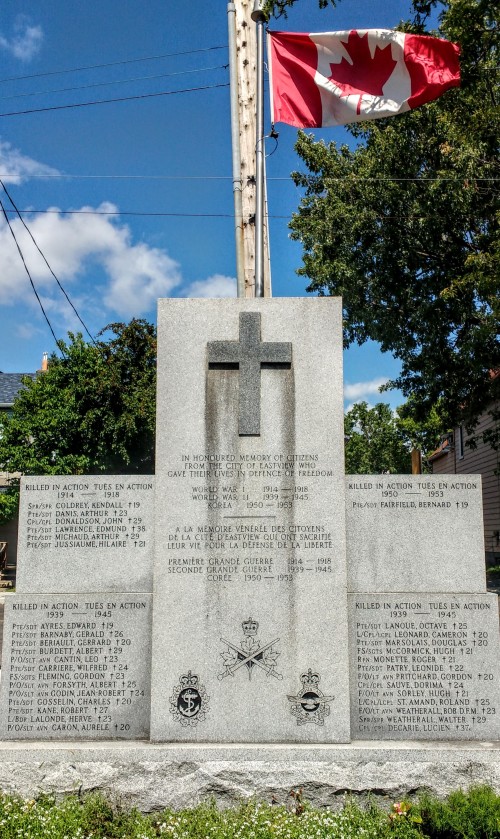
In the heart of Vanier stands a stone memorial. Years of wind, rain, and snow have left their mark – the cross at the top weeps dark streaks over an inscription honouring residents who “gave their lives in defence of freedom.” The names of the fallen, however, are still pristine and the crisply cut letters are easy to read. “F/O/LT AVN WEATHERALL, BOB D.F.M. † 23” A rank, a name, an age at the time of death. A life summed up in a few words. These only tell the end of a story. So what happened in the beginning?
August 28, 1920 was a hot summer day, and there was a hint of rain in the air as Barbara and John Weatherall celebrated the birth of their son, Robert Lorne Weatherall. Bob, as everyone called him, grew up in the town of Eastview (present-day Vanier), sharing a house on 33 Ann Street with his three brothers and four sisters. He attended Eastview Public School and then Ottawa Technical School, where he specialized in printing. He was an usher at Eastview Baptist Church, spent his summers working as a tinsmith assistant, and then joined Capital Carbon and Ribbon Co. as a shipper.

Like any teenagers, the Weatherall kids could be troublemakers, but Bob directed most of his energy into sports: swimming, rugby, basketball, softball, baseball, running, tennis, and pole vaulting. His best sport was boxing: he held the Ottawa city and Ottawa police titles for 3 years, and at the Montreal Golden Gloves tournament he lost only to an Olympic champion.
When World War II broke out in 1939, Bob decided to trade his boxer’s gloves for a soldier’s uniform and volunteered to be a pilot. Although he was initially rejected because of a surplus of applicants, the next year the flying corps was once again accepting candidates and Bob enlisted on May 31, 1940.

He attended air gunner training at RCAF Station Rockcliffe. When he passed the two-week course, his instructor noted that Bob was “very reliable…quite competent…[and] exceptionally keen.” He was assigned to convoy duty on the east coast, where he fell in love with Mary Edna Arsenault. Her acquaintances predicted she would be “a very fine wife and inspiration to any young man,” and the happy couple married on July 31, 1941. One month later, Bob shipped off to England, and Edna moved across the country to live with his family in Eastview.
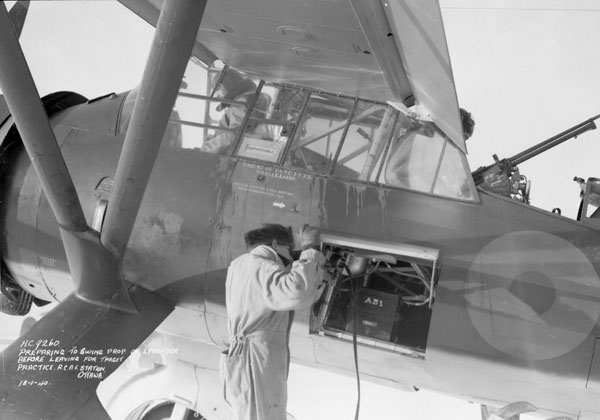
Once in Europe, Bob was attached to RAF squadrons for the duration of his service. He was posted to No. 207 Squadron, Bomber Command, and completed his first tour of operations. He flew in Avro Manchester and Lancaster bombers on missions over Hamburg, Essen, Danzig, Le Creusot, Munich, Berlin, and other targets. Though in Canada he’d been told he would be an unsuitable instructor, he spent time training units in England. Further defying expectations, as someone deemed not “of officer caliber,” Bob was awarded a Distinguished Flying Medal by King George VI in 1943.The citation noted that Bob had “displayed a fine fighting spirit and determination to engage the enemy” with “exceptional skill and courage.” Later that year, he was promoted to Flying Officer.

Bob’s success in the air force was no surprise to his family and friends back home. They described him as reliable, trustworthy, honest, conscientious, and capable – all qualities that would have been essential serving in Bomber Command. Each member of a plane’s crew had to execute his role under intense pressure and in great danger. While nearly half of aircrews did not survive their tour of duty, Bob completed all 30 sorties of his tour. He had his fair share of near misses but, as he told the Ottawa Citizen, “A good trip is when it comes close but you get away with it.”
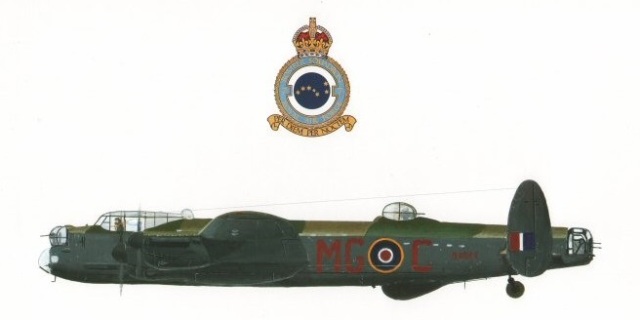
But on the night of May 19, 1944, Bob did not get away with it. He was the mid-upper gunner of Master Bomber Lancaster ND845, No. 7 Squadron, out on a mission to bomb the Le Mans railway yards. The experienced aircrew were flying the pathfinder plane, leading the way and marking targets. It’s thought that anti-aircraft fire (flak) caused it to collide with another plane that went missing that night, and it fell directly on a Renault manufacturing plant.
At the time, authorities knew only that the plane hadn’t returned, so on May 22nd Edna received a letter stating that Bob was missing. For several months, the Weatheralls wrote letters asking for news about Bob. His older brother Walter was serving overseas as a sapper, and also made inquiries. By the time the air force replied to Walter, he had gone missing as well, just two and a half months after his younger brother. It wasn’t until a year later that Bob was officially declared to have died on May 20, 1944.

It turned out that the bodies of the aircrew who disappeared that night were buried by the Germans at Le Mans. Bob was ultimately laid to rest at Bretteville-sur-Laize Canadian War Cemetery, which is maintained by the Commonwealth War Graves Commission. Back in Canada, life carried on. Edna moved back home to Prince Edward Island, remarried, and lived in the United States. The Weatherall family coped with their losses. One difficult task they faced was choosing what inscription to put on Bob’s headstone at Bretteville. How could they do justice to their feelings and his sacrifice? “SAFE IN THE ARMS OF JESUS” / HE DIED / THAT OTHERS MIGHT LIVE / GOD BLESS OUR SON. A life summed up in a few words. Another ending written in stone, an ocean away from home.

With thanks to the Weatherall family for their permission to research and share Bob’s story, and to the Canadian Battlefields Foundation for their incredible study tour, during which I was able to present Bob’s life and visit his grave.
Lilia L. has graduated from the University of Ottawa, with an honours degree in History and a minor in Political Science. This is her third year on YoCo, and she is excited for the historical discoveries this year will bring. As a lifelong Ottawan, Lilia is intrigued by how the past is present in the city – from the iconic Parliament Buildings to the local neighbourhood park. In her free time, she enjoys reading and exploring Ottawa’s many delicious dessert spots.
L’esprit du combat : Bob Weatherall, d’Eastview
Par Lilia L.
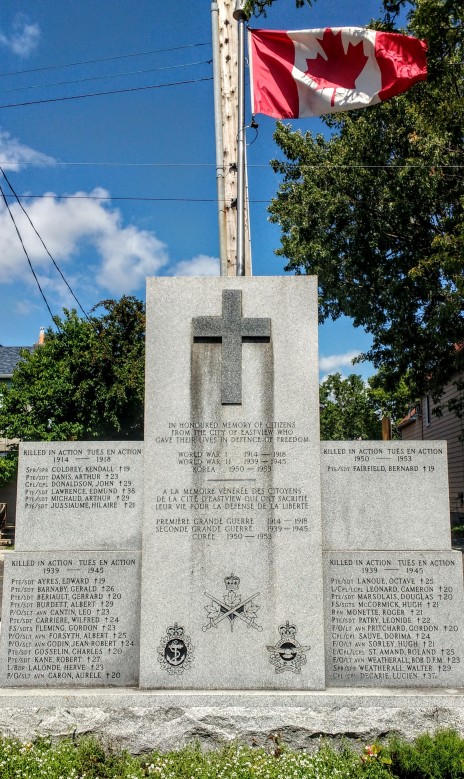
Au cœur de Vanier s’élève un monument de pierre marqué par des années de vent, de pluie et de neige. Des traces sombres suintent de la croix qui le surmonte et recouvrent une inscription honorant la mémoire des résidents « qui ont donné leur vie pour défendre la liberté ». Cependant, les noms des soldats morts au combat sont encore clairs, et l’on peut aisément en déchiffrer les lettres bien découpées. « F/O/LT AVN WEATHERALL, BOB D.F.M. † 23 » : un rang, un nom et l’âge au moment du décès. Une vie résumée en quelques mots, qui ne racontent que la fin d’un récit. Mais comment celui‑ci a‑t‑il débuté?
Par une chaude journée de l’été 1920, le 28 août, de la bruine humecte l’air. Barbara et John Weatherall célèbrent la naissance de leur fils, Robert Lorne Weatherall. Bob, comme on le surnommera plus tard, grandit dans la ville d’Eastview (l’actuelle Vanier), partageant avec ses trois frères et ses quatre sœurs la maison familiale située au 33 de la rue Ann. Bob fréquente l’Eastview Public School avant d’entrer à l’Ottawa Technical School, où il étudie l’imprimerie. Bedeau à l’église Eastview Baptist, il passe ses étés à travailler comme assistant ferblantier, puis il se joint à la Capital Carbon and Ribbon Co. à titre d’expéditionnaire.
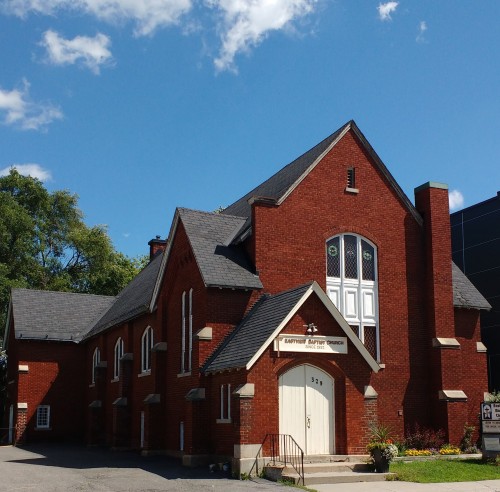
Comme tous les adolescents, les enfants Weatherall font parfois des bêtises, mais Bob consacre le plus clair de son temps libre aux sports : natation, rugby, basketball, balle molle, baseball, course à pied, tennis et saut à la perche. Cependant, c’est en boxe qu’il se démarque : il est champion en titre de la ville d’Ottawa et de la police d’Ottawa pendant trois ans, et au combat organisé par le Montreal Golden Gloves, il est battu uniquement par un champion olympique.
Lorsque la Seconde Guerre mondiale éclate en 1939, Bob décide de troquer ses gants de boxe pour l’uniforme de soldat, et il se présente comme pilote. Sa candidature est d’abord rejetée à cause du grand nombre de demandes, mais l’année suivante, le corps d’aviation accepte de nouveaux candidats, et Bob s’enrôle le 31 mai 1940.
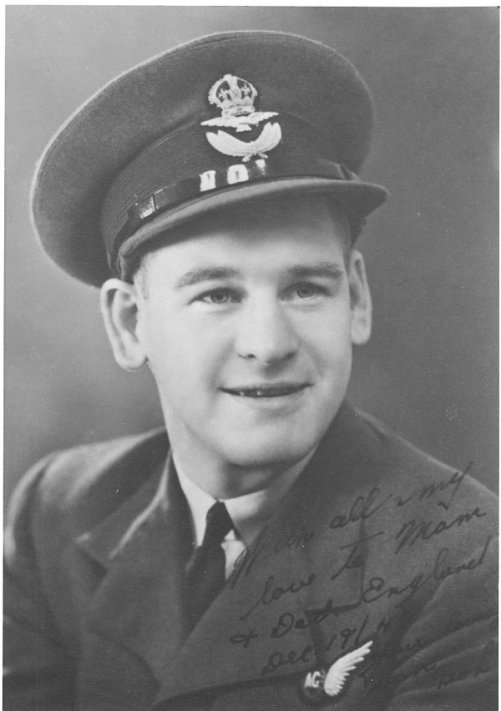
Il suit la formation de mitrailleur de bord à la Station Rockcliffe de l’ARC. Après un cours réussi de deux semaines, son instructeur note que Bob est « très fiable […] assez compétent […] et exceptionnellement vif ». On lui confie d’escorter des convois sur la côte est, et c’est là qu’il tombe amoureux de Mary Edna Arsenault, dont les amis prédisent qu’elle sera « une bonne épouse, et une inspiration pour n’importe jeune homme ». L’heureux couple se marie le 31 juillet 1941. Un mois plus tard, Bob est envoyé en Angleterre, et Edna traverse tout le pays pour s’installer avec sa belle-famille, à Eastview.
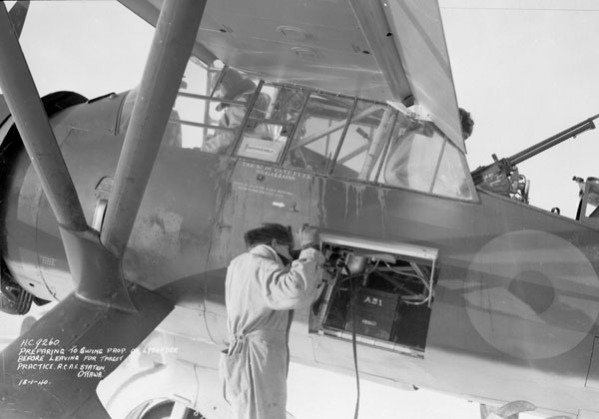
En Europe, Bob se joint aux escadrons de la RAF pendant toute la durée de son service. Il est posté auprès de l’escadron n° 207, le Bomber Command, et il termine sa première série d’opérations. Il accomplit des missions avec des bombardiers Avro Manchester et Lancaster, survolant Hambourg, Essen, Danzig, Le Creusot, Munich, Berlin et autres cibles. Même si on l’a prévenu au Canada qu’il ne pourrait pas être instructeur, il donne pendant quelque temps de la formation à des unités en Angleterre. Par la suite, contredisant les prédictions de ses supérieurs qui croyaient qu’il n’avait pas « la trempe d’un officier », il reçoit du roi George VI une Médaille du service distingué en 1943, qui souligne le « bel esprit de combat et la détermination à confronter l’ennemi » de Bob ainsi que « ses compétences et son courage exceptionnels ». Un peu plus tard cette année-là, Bob est promu lieutenant d’aviation.
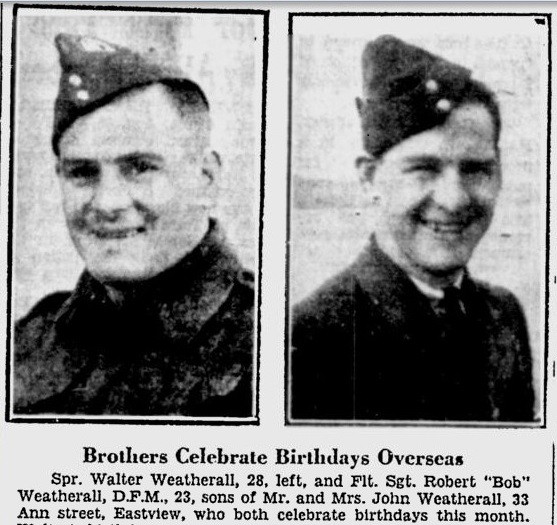
La famille et les amis d’enfance de Bob ne sont pas surpris par son succès dans l’armée aérienne. Tous le décrivent comme un homme loyal, fiable, honnête, consciencieux et efficace – autant de qualités essentielles pour servir le Bomber Command. Les membres d’équipage de l’avion remplissent chacun leur rôle, soumis à une forte pression et à un grand danger. Tandis que plus de la moitié de l’équipage ne survit pas à ses missions, Bob exécute les 30 sorties qui lui sont assignées. Il passe souvent près d’être porté disparu mais, comme il l’indique au journaliste de l’Ottawa Citizen, « une bonne mission, c’est quand on frôle le danger mais qu’on y échappe. »

Mais dans la nuit du 19 mai 1944, Bob ne s’en tire pas. Il est ce soir-là mitrailleur arrière d’un appareil Master Bomber Lancaster ND845 avec l’escadron n° 7, et sa mission consiste à bombarder la gare de triage de Le Mans. L’équipage chevronné pilote l’avion qui sert d’éclaireur, ouvrant la voie aux autres et marquant les cibles. On pense qu’en raison de tirs antiaériens, l’avion dans lequel volait Bob est entré en collision avec un autre avion porté disparu cette nuit‑là, et qu’il est tombé directement sur une usine Renault.
À l’époque, les autorités savent seulement que l’avion n’est pas revenu. Aussi, le 22 mai, Edna reçoit‑elle une lettre lui indiquant que Bob est porté disparu. Pendant plusieurs mois, les Weatherall écrivent des lettres pour demander des nouvelles de Bob. Son grand frère Walter, qui sert outremer à titre de sapeur, fait aussi des recherches. Mais quand enfin l’aviation répond à Walter, il est lui‑même porté disparu, à peine deux mois et demi après la disparition de son jeune frère. Il faudra attendre un an avant que l’armée déclare officiellement que Bob est mort le 20 mai 1944.
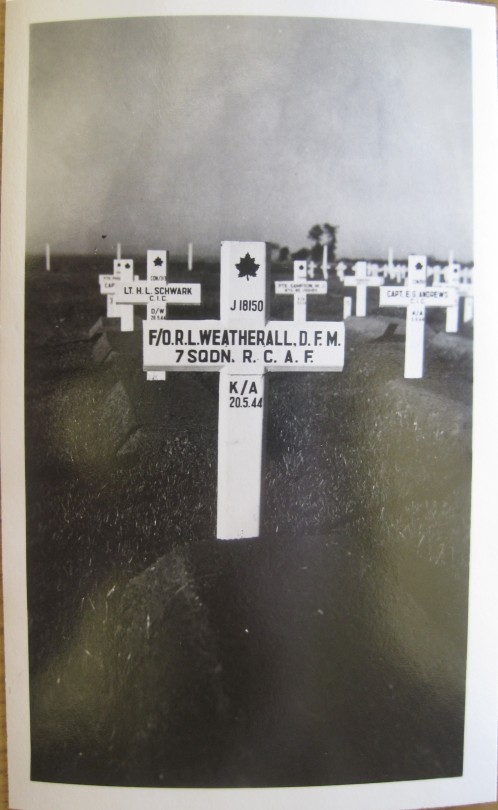
Il s’avère que les Allemands ont enterré à Le Mans les corps des membres d’équipage disparus ce soir-là. En fin de compte, les restes de Bob sont transportés au cimetière militaire canadien de Bretteville-sur-Laize, géré par la Commission des sépultures de guerre du Commonwealth. Au Canada, la vie continue. Edna retourne à l’Île-du-Prince-Édouard, se remarie et s’installe aux États-Unis. La famille Weatherall apprend à survivre à ses deuils. L’une de leurs difficultés consiste à choisir quelle inscription graver sur la pierre tombale de Bob, à Bretteville. Comment rendre justice à leurs propres sentiments et à son sacrifice? « SAIN ET SAUF DANS LES BRAS DE JÉSUS » / IL EST MORT / AFIN QUE D’AUTRES PUISSENT VIVRE / DIEU BÉNISSE NOTRE FILS. Une vie résumée en quelques mots, une autre vie qui a fini gravée dans la pierre, de l’autre côté de l’océan.
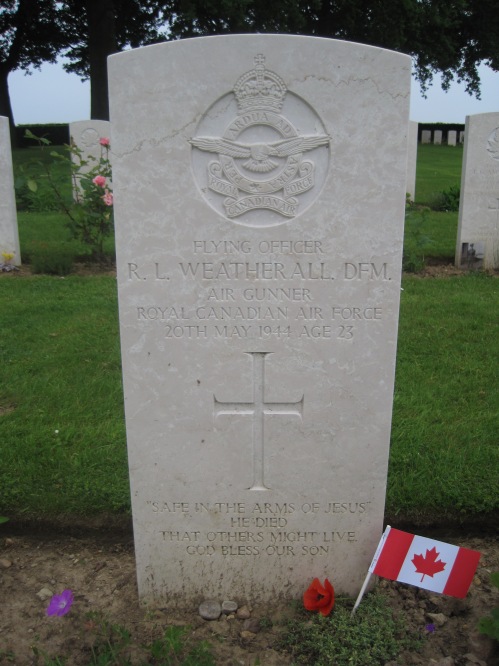
Je tiens à remercier la famille Weatherall qui m’a permis d’effectuer des recherches et de partager l’histoire de Bob, ainsi que la Fondation canadienne des champs de bataille pour leur superbe voyage d’étude au cours duquel j’ai pu présenter la vie de Bob et visiter sa tombe.
Lilia sera diplômée ce printemps de l’Université d’Ottawa. Elle prépare un baccalauréat en histoire avec mineure en science politique. C’est son troisième mandat comme membre du Conseil, et elle est impatiente de voir sur quelles découvertes historiques elle lèvera le voile cette année. Native d’Ottawa, Lilia s’émerveille de voir le passé encore présent dans la ville – des emblématiques édifices du Parlement au parc local du quartier. Elle occupe ses loisirs à lire et à explorer les nombreux lieux d’Ottawa qui servent de délicieux desserts.

